Inferno Read online
Page 20
This enormous attic space was one Langdon had viewed during his Nebbiolo-fogged secret passages tour a few years ago. The cupboardlike viewing window had been cut in the wall of the architectural-model room so visitors could inspect the models of the truss work and then peer through the opening with a flashlight and see the real thing.
Now that Langdon was actually inside the garret, he was surprised by how much the truss architecture resembled that of an old New England barn—traditional king post–and-strut assembly with “Jupiter’s arrow point” connections.
Sienna had also climbed through the opening and now steadied herself on the beam beside him, looking disoriented. Langdon swung the flashlight back and forth to show her the unusual landscape.
From this end, the view down the length of the garret was like peering through a long line of isosceles triangles that telescoped into the distance, extending out toward some distant vanishing point. Beneath their feet, the garret had no floorboards, and its horizontal supporting beams were entirely exposed, resembling a series of massive railroad ties.
Langdon pointed straight down the long shaft, speaking in hushed tones. “This space is directly over the Hall of the Five Hundred. If we can get to the other end, I know how to reach the Duke of Athens Stairway.”
Sienna cast a skeptical eye into the labyrinth of beams and supports that stretched before them. The only apparent way to advance through the garret would be to jump between the struts like kids on a train track. The struts were large—each consisting of numerous beams strapped together with wide iron clasps into a single powerful sheaf—plenty large enough to balance on. The challenge, however, was that the separation between the struts was much too far to leap across safely.
“I can’t possibly jump between those beams,” Sienna whispered.
Langdon doubted he could either, and falling would be certain death. He aimed the flashlight down through the open space between the struts.
Eight feet below them, suspended by iron rods, hung a dusty horizontal expanse—a floor of sorts—which extended as far as they could see. Despite its appearance of solidity, Langdon knew the floor consisted primarily of stretched fabric covered in dust. This was the “back side” of the Hall of the Five Hundred’s suspended ceiling—a sprawling expanse of wooden lacunars that framed thirty-nine Vasari canvases, all mounted horizontally in a kind of patchwork-quilt configuration.
Sienna pointed down to the dusty expanse beneath them. “Can we climb down there and walk across?”
Not unless you want to fall through a Vasari canvas into the Hall of the Five Hundred.
“Actually, there’s a better way,” Langdon said calmly, not wanting to frighten her. He began moving down the strut toward the central backbone of the garret.
On his previous visit, in addition to peering through the viewing window in the room of architectural models, Langdon had explored the garret on foot, entering through a doorway at the other end of the attic. If his wine-impaired memory served him, a sturdy boardwalk ran along the central spine of the garret, providing tourists access to a large viewing deck in the center of the space.
However, when Langdon arrived at the center of the strut, he found a boardwalk that in no way resembled the one he recalled from his tour.
How much Nebbiolo did I drink that day?
Rather than a sturdy, tourist-worthy structure, he was looking at a hodgepodge of loose planks that had been laid perpendicularly across the beams to create a rudimentary catwalk—more of a tightrope than a bridge.
Apparently, the sturdy tourist walkway that originated at the other end extended only as far as the central viewing platform. From there, the tourists evidently retraced their steps. This jerry-rigged balance beam that Langdon and Sienna now faced was most likely installed so engineers could service the remaining attic space at this end.
“Looks like we’re walking the plank,” Langdon said, eyeing the narrow boards with uncertainty.
Sienna shrugged, unfazed. “No worse than Venice in flood season.”
Langdon realized she had a point. On his most recent research trip to Venice, St. Mark’s Square had been under a foot of water, and he had walked from the Hotel Danieli to the basilica on wooden planks propped between cinder blocks and inverted buckets. Of course, the prospect of possibly getting one’s loafers wet was a far cry from that of plunging through a Renaissance masterpiece to one’s death.
Pushing the thought from his mind, Langdon stepped out onto the narrow board with a feigned self-assurance that he hoped would calm any worries Sienna might secretly be harboring. Nonetheless, despite his confident exterior, his heart was pounding as he moved across the first plank. As he neared the middle, the plank bowed beneath his weight, creaking ominously. He pressed on, faster now, finally reaching the other side and the relative safety of the second strut.
Exhaling, Langdon turned to shine the light for Sienna and also offer any coaxing words she might need. She apparently needed none. As soon as his beam illuminated the plank, she was skimming along its length with remarkable dexterity. The board barely bent beneath her slender body, and within seconds she had joined him on the other side.
Encouraged, Langdon turned back and headed out across the next plank. Sienna waited until he had crossed and could turn around and shine the light for her, and then she followed, staying right with him. Settling into a steady rhythm, they pressed on—two figures moving one after the other by the light of a single flashlight. From somewhere beneath them, the sound of police walkie-talkies crackled up through the thin ceiling. Langdon permitted himself a faint smile. We’re hovering above the Hall of the Five Hundred, weightless and invisible.
“So, Robert,” Sienna whispered. “You said Ignazio told you where to find the mask?”
“He did … but in a kind of code.” Langdon quickly explained that Ignazio had apparently not wanted to blurt out the mask’s location on the answering machine, and so he had shared the information in a more cryptic manner. “He referenced paradise, which I assume is an allusion to the final section of The Divine Comedy. His exact words were ‘Paradise Twenty-five.’ ”
Sienna glanced up. “He must mean Canto Twenty-five.”
“I agree,” Langdon said. A canto was the rough equivalent of a chapter, the word harkening back to the oral tradition of “singing” epic poems. The Divine Comedy contained precisely one hundred cantos in all, divided into three sections.
Inferno 1–34
Purgatorio 1–33
Paradiso 1–33
Paradise Twenty-five, Langdon thought, wishing his eidetic memory were strong enough to recall the entire text. Not even close—we need to find a copy of the text.
“There’s more,” Langdon continued. “The last thing Ignazio said to me was: ‘The gates are open to you, but you must hurry.’ ” He paused, glancing back at Sienna. “Canto Twenty-five probably makes reference to a specific location here in Florence. Apparently, someplace with gates.”
Sienna frowned. “But this city probably has dozens of gates.”
“Yes, which is why we need to read Canto Twenty-five of Paradise.” He gave her a hopeful smile. “You don’t, by any chance, know the entire Divine Comedy by heart, do you?”
She gave him a dumb look. “Fourteen thousand lines of archaic Italian that I read as a kid?” She shook her head. “You’re the one with the freakish memory, Professor. I’m just a doctor.”
As they pressed on, Langdon found it sad somehow that Sienna, even after all they’d been through together, apparently still preferred to withhold the truth about her exceptional intellect. She’s just a doctor? Langdon had to chuckle. Most humble doctor on earth, he thought, recalling the clippings he’d read about her special skills—skills that, unfortunately but not surprisingly, did not include total recall of one of history’s longest epic poems.
In silence, they continued on, crossing several more beams. Finally, up ahead Langdon saw a heartening shape in the darkness. The viewing platform! The preca
rious planking on which they were walking led directly to a much sturdier structure with guardrails. If they climbed onto the platform, they could continue on along the walkway until they exited the garret through a doorway, which, as Langdon recalled, was very close to the Duke of Athens Stairway.
As they neared the platform, Langdon glanced down at the ceiling suspended eight feet below. So far all the lunettes beneath them had been similar. The upcoming lunette, however, was massive—far larger than the others.
The Apotheosis of Cosimo I, Langdon mused.
This vast, circular lunette was Vasari’s most precious painting—the central lunette in the entire Hall of the Five Hundred. Langdon often showed slides of this work to his students, pointing out its similarities to The Apotheosis of Washington in the U.S. Capitol—a humble reminder that fledgling America had adopted far more from Italy than merely the concept of a republic.
Today, however, Langdon was more interested in hurrying past the Apotheosis than in studying it. As he hastened his pace, he turned his head ever so slightly to whisper back to Sienna that they were nearly there.
As he did so, his right foot missed the center of the plank and his borrowed loafer landed half off the edge. His ankle rolled, and Langdon lurched forward, half stumbling, half running, trying to make a quick stutter step to regain his balance.
But it was too late.
His knees hit the plank hard, and his hands strained desperately forward, trying to reach the crossing strut. The flashlight went clattering into the dark space beneath them, landing on the canvas, which caught it like a net. Langdon’s legs pumped, barely propelling him to safety on the next strut as the plank fell away beneath him, landing with a crash eight feet below on the wooden lacunar surrounding the canvas of Vasari’s Apotheosis.
The sound echoed through the garret.
Horrified, Langdon scrambled to his feet and turned back toward Sienna.
In the dim glow of the abandoned flashlight, which lay on the canvas below, Langdon could see that Sienna was standing on the strut behind him, now trapped, with no way across. Her eyes conveyed what Langdon already knew. The noise of the falling plank had almost certainly given them away.
Vayentha’s eyes bolted upward to the ornate ceiling.
“Rats in the attic?” the man with the camcorder joked nervously as the sound reverberated down.
Big rats, Vayentha thought, gazing up at the circular painting in the center of the hall’s ceiling. A small cloud of dust was now filtering down from between the lacunars, and Vayentha could swear she saw a slight bulge in the canvas … almost as if someone were pushing on it from the other side.
“Maybe one of the officers dropped his gun off the viewing platform,” the man said, eyeing the lump in the painting. “What do you think they’re looking for? All this activity is very exciting.”
“A viewing platform?” Vayentha demanded. “People can actually go up there?”
“Sure.” He motioned to the museum entrance. “Just inside that door is a door that leads up to a catwalk in the attic. You can see Vasari’s truss work. It’s incredible.”
Brüder’s voice suddenly echoed again across the Hall of the Five Hundred. “So where the hell did they go?!”
His words, like his anguished yell a little earlier, had emanated from behind a lattice grate positioned high on the wall to Vayentha’s left. Brüder was apparently in a room behind the grate … a full story beneath the room’s ornate ceiling.
Vayentha’s eyes climbed again to the bulge in the canvas overhead.
Rats in the attic, she thought. Trying to find a way out.
She thanked the man with the camcorder and drifted quickly toward the museum entrance. The door was closed, but with all the officers running in and out, she suspected that it was unlocked.
Sure enough, her instincts were correct.
CHAPTER 47
Outside in the piazza, amid the chaos of arriving police, a middle-aged man stood in the shadows of the Loggia dei Lanzi, where he had been observing the activity with great interest. The man wore Plume Paris spectacles, a paisley necktie, and a tiny gold stud in one ear.
As he watched the commotion, he caught himself scratching at his neck again. The man had developed a rash overnight, which seemed to be getting worse, manifesting in small pustules on his jawline, neck, cheeks, and over his eyes.
When he glanced down at his fingernails, he saw they were bloody. He took out his handkerchief and wiped his fingers, also dabbing the bloody pustules on his neck and cheeks.
When he had cleaned himself up, he returned his gaze to the two black vans parked outside the palazzo. The closest van contained two people in the backseat.
One was an armed soldier in black.
The other was an older, but very beautiful silver-haired woman wearing a blue amulet.
The soldier looked as if he were preparing a hypodermic syringe.
Inside the van, Dr. Elizabeth Sinskey gazed absently out at the palazzo, wondering about how this crisis had deteriorated to such an extent.
“Ma’am,” a deep voice said beside her.
She turned groggily to the soldier accompanying her. He was gripping her forearm and holding up a syringe. “Just be still.”
The sharp stab of a needle pierced her flesh.
The soldier completed the injection. “Now go back to sleep.”
As she closed her eyes, she could have sworn she saw a man studying her from the shadows. He wore designer glasses and a preppie necktie. His face was rashy and red. For a moment she thought she knew him, but when she opened her eyes for another look, the man had disappeared.
CHAPTER 48
In the darkness of the garret, Langdon and Sienna were now separated by a twenty-foot expanse of open air. Eight feet beneath them, the fallen plank had come to rest across the wooden framing that supported the canvas bearing Vasari’s Apotheosis. The large flashlight, still glowing, was resting on the canvas itself, creating a small indentation, like a stone on a trampoline.
“The plank behind you,” Langdon whispered. “Can you drag it across to reach this strut?”
Sienna eyed the plank. “Not without the other end falling into the canvas.”
Langdon had feared as much; the last thing they needed now was to send a two-by-six crashing through a Vasari canvas.
“I’ve got an idea,” Sienna said, now moving sideways along the strut, heading for the sidewall. Langdon followed on his beam, the footing becoming more treacherous with each step as they ventured away from the flashlight beam. By the time they reached the sidewall, they were almost entirely in darkness.
“Down there,” Sienna whispered, pointing into the obscurity below them. “At the edge of the frame. It’s got to be mounted to the wall. It should hold me.”
Before Langdon could protest, Sienna was climbing down off the strut, using a series of supporting beams as a ladder. She eased herself down onto the edge of the wooden lacunar. It creaked once, but held. Then, inching along the wall, Sienna began moving in Langdon’s direction as if she were inching across the ledge of a high building. The lacunar creaked again.
Thin ice, Langdon thought. Stay near shore.
As Sienna reached the halfway point, approaching the strut on which he stood in the darkness, Langdon felt a sudden renewed hope that they might indeed get out of here in time.
Suddenly, somewhere in the darkness ahead, a door slammed and he heard fast-moving footsteps approaching along the walkway. The beam of a flashlight now appeared, sweeping the area, getting closer every second. Langdon felt his hopes sink. Someone was coming their way—moving along the main walkway and cutting off their escape route.
“Sienna, keep going,” he whispered, reacting on instinct. “Continue the entire length of the wall. There’s an exit at the far end. I’ll run interference.”
“No!” Sienna whispered urgently. “Robert, come back!”
But Langdon was already on the move, heading back along the strut toward the centr
al spine of the garret, leaving Sienna in the darkness, inching across the sidewall, eight feet below him.
When Langdon arrived at the center of the garret, a faceless silhouette with a flashlight had just arrived on the raised viewing platform. The person halted at the low guardrail and aimed the flashlight beam down into Langdon’s eyes.
The glare was blinding, and Langdon immediately raised his arms in surrender. He could not have felt more vulnerable—balanced high above the Hall of the Five Hundred, blinded by a bright light.
Langdon waited for a gunshot or for an authoritative command, but there was only silence. After a moment the beam swung away from his face and began probing the darkness behind him, apparently looking for something … or someone else. As the beam left his eyes, Langdon could just make out the silhouette of the person now blocking his escape route. It was a woman, lean and dressed all in black. He had no doubt that beneath her baseball cap was a head of spiked hair.
Langdon’s muscles tightened instinctively as his mind flooded with images of Dr. Marconi dying on the hospital floor.
She found me. She’s here to finish the job.
Langdon flashed on an image of Greek free divers swimming deep into a tunnel, far past the point of no return, and then colliding with a stony dead end.
The assassin swung her flashlight beam back down into Langdon’s eyes.
“Mr. Langdon,” she whispered. “Where is your friend?”
Langdon felt a chill. This killer is here for both of us.
Langdon made a show of glancing away from Sienna, over his shoulder into the darkness from which they’d come. “She has nothing to do with this. You want me.”
Langdon prayed that Sienna was now making progress along the wall. If she could sneak beyond the viewing platform, she could then quietly cross back to the central boardwalk, behind the spike-haired woman, and move toward the door.
The assassin again raised her light and scanned the empty garret behind him. With the glare momentarily out of his eyes, Langdon caught a sudden glimpse of a form in the darkness behind her.
Oh God, no!
Sienna was indeed making her way across a strut in the direction of the central boardwalk, but unfortunately, she was only ten yards behind their attacker.
Sienna, no! You’re too close! She’ll hear you!
The beam returned to Langdon’s eyes again.
“Listen carefully, Professor,” the assassin whispered. “If you want to live, I suggest you trust me. My mission has been terminated. I have no reason to harm you. You and I are on the same team now, and I may know how to help you.”
Langdon was barely listening, his thoughts focused squarely on Sienna, who was now faintly visible in profile, climbing deftly up onto the walkway behind the viewing platform, entirely too close to the woman with the gun.
Run! he willed her. Get the hell out of here!
Sienna, however, to Langdon’s alarm, held her ground, crouching low in the shadows and watching in silence.
Vayentha’s eyes probed the darkness behind Langdon. Where the hell did she go? Did they separate?
Vayentha had to find a way to keep the fleeing couple out of Brüder’s hands. It’s my only hope.
“Sienna?!” Vayentha ventured in a throaty whisper. “If you can hear me, listen carefully. You do not want to be captured by the men downstairs. They will not be lenient. I know an escape route. I can help you. Trust me.”
“Trust you?” Langdon challenged, his voice suddenly loud enough that anyone nearby could hear him. “You’re a killer!”
Sienna is nearby, Vayentha realized. Langdon is talking to her … trying to warn her.
Vayentha tried again. “Sienna, the situation is complicated, but I can get you out of here. Consider your options. You’re trapped. You have no choice.”
“She has a choice,” Langdon called out loudly. “And she’s smart enough to run as far from you as possible.”
“Everything’s changed,” Vayentha insisted. “I have no reason to hurt either of you.”
“You killed Dr. Marconi! And I’m guessing you’re also the one who shot me in the head!”
Vayentha knew that the man was never going to believe she had no intention of killing him.
The time for talking is over. There’s nothing I can say to convince him.
Without hesitation, she reached into her leather jacket and extracted the silenced handgun.

 Angels & Demons
Angels & Demons Origin
Origin The Da Vinci Code
The Da Vinci Code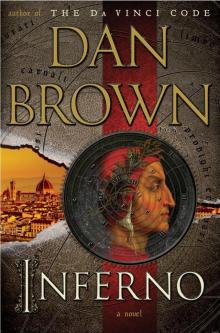 Inferno
Inferno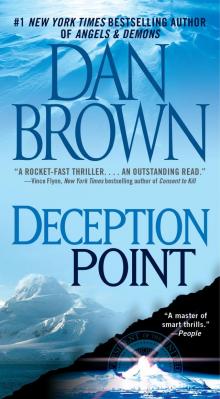 Deception Point
Deception Point Digital Fortress
Digital Fortress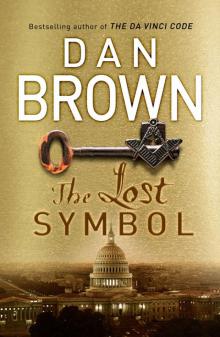 The Lost Symbol
The Lost Symbol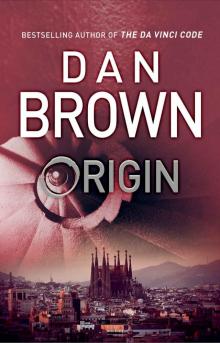 Origin: (Robert Langdon Book 5)
Origin: (Robert Langdon Book 5)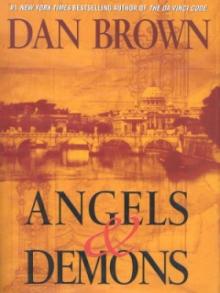 Angles & Demons
Angles & Demons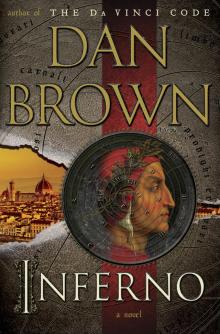 Inferno: A Novel
Inferno: A Novel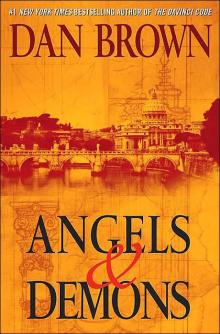 Angels & Demons rl-1
Angels & Demons rl-1 The Great Expectations School
The Great Expectations School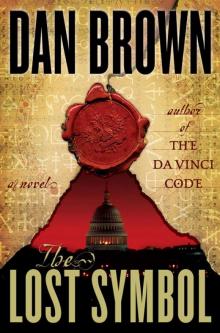 The Lost Symbol rl-3
The Lost Symbol rl-3 Angels and Demons
Angels and Demons Inferno: Special Illustrated Edition: Featuring Robert Langdon
Inferno: Special Illustrated Edition: Featuring Robert Langdon